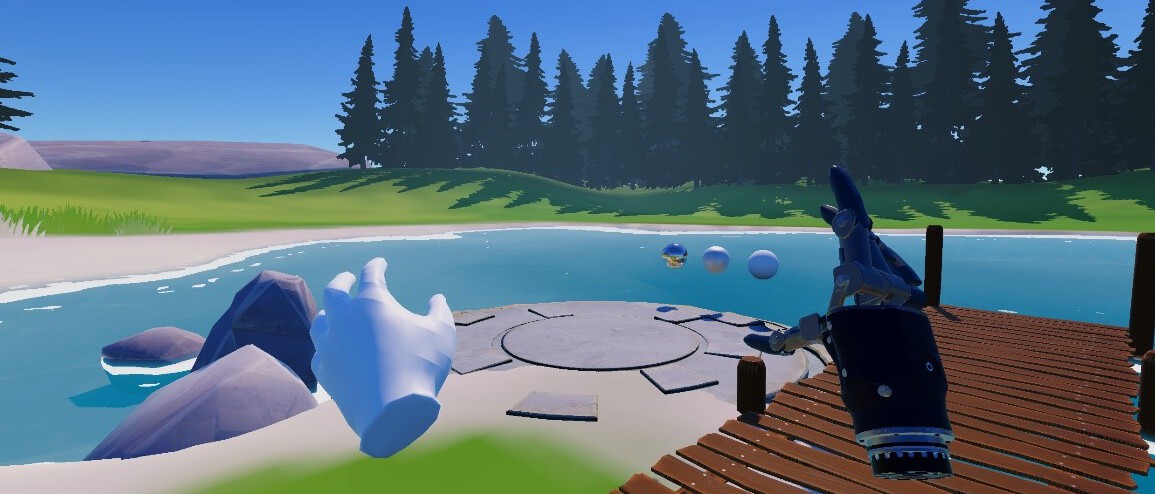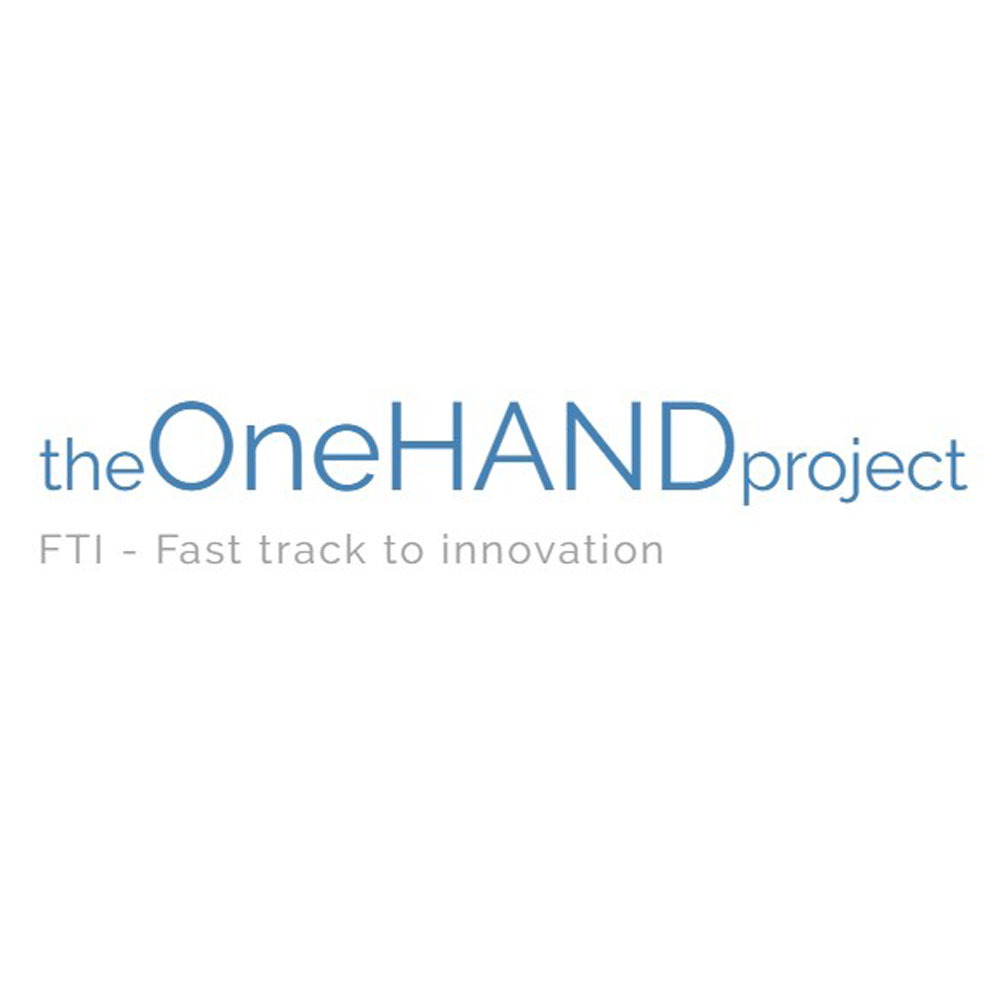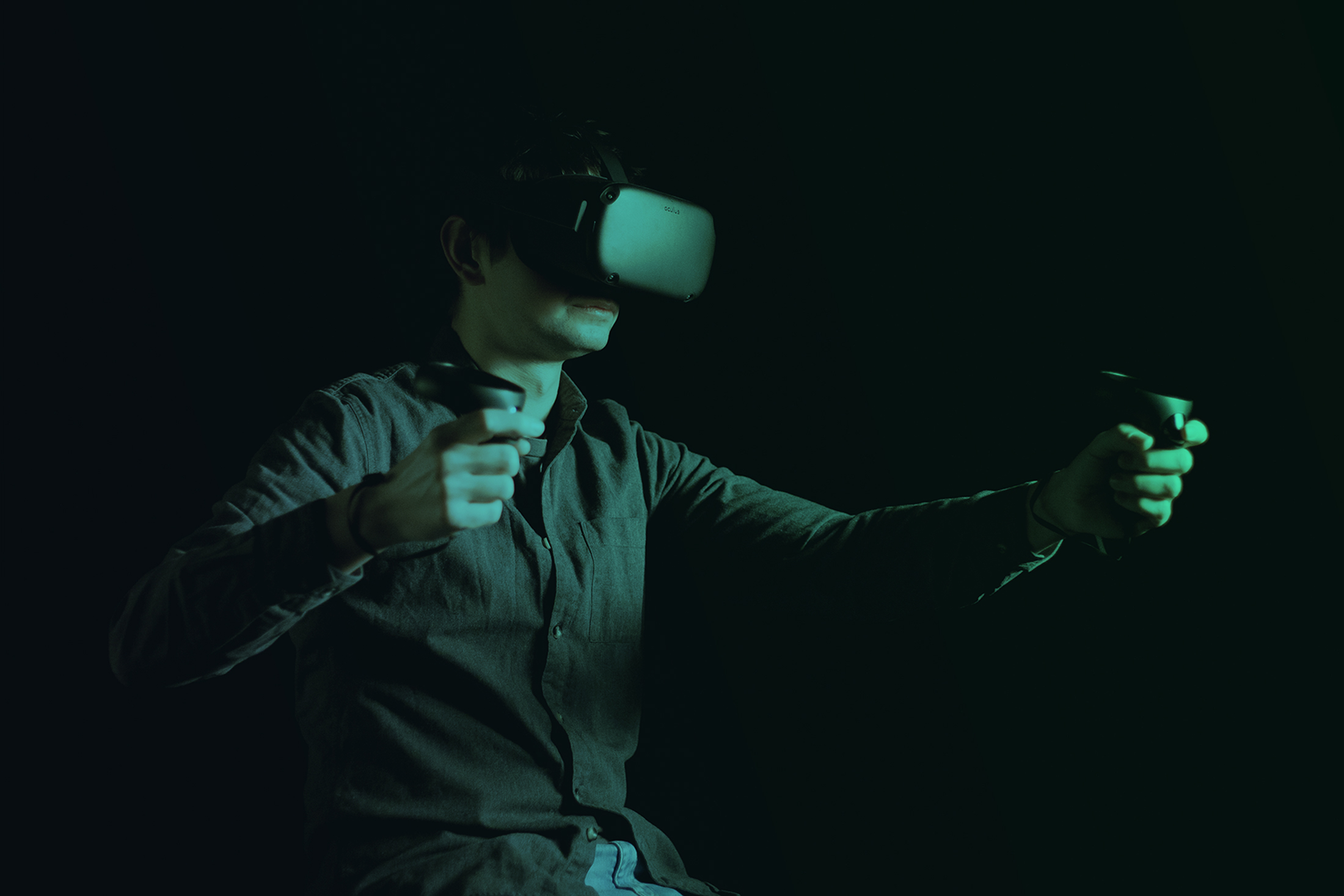Innovative user-centred solution to transform upper limb amputees’ treatment
OneHAND is a European Commission Horizon 20 project running from December 2020 till June 2023.
OneHAND is a user-centered solution project that aims to:
- create the OneHAND prosthesis, that builds on a unique hydraulic-driven design that allows fingers to be moved independently by a single central pumping unit.
- develop the OneHAND Virtual Reality (VR) rehabilitation and training platforms, an easily available tool that is highly engaging training at scale, which will maximize user engagement and deliver superior outcomes (offer better physical rehabilitation & better pain management), while reducing treatment time (by at least 50%). OneHAND solution will provide an improved user experience and satisfaction, and ultimately, allow a standardization of the treatment process.
- develop standard guidelines for upper limb patient recovery and rehabilitation in order to ensure best practices and an improved patient journey.

Lake scene in VR, hand and prosthesis visible for exercises
The project consists of a strong consortium of companies from 4 different countries.
- Hy5 a Norwegian organization that has created a disruptive hand prosthesis that is highly functional.
- The Simulation Crew is a Dutch software specialist company that successfully implemented VR training applications in healthcare institutions.
- PROTHESEUS is a distributor of world-class prosthetics holding a wide network in Germany and Austria.
- IC2A is an international alliance of amputee associations that dedicates its activities to share experiences, knowledge, and best practices to inspire improvement in the quality of life of amputees and individuals born with limb deficiency. The Dutch IC2A member, Korter Maar Krachtig supports the OneHAND project.

Control established, EMG sensors to control hand opening and closing
Improvement of rehabilitation training and (pre-) prosthesis training
Despite several innovations, the needs of prosthetic hand users are still widely unaddressed, with 1/5 of end-users giving up on prosthesis use altogether. The cumbersome prosthetic journey, and the limitations of existing commercial alternatives are at the heart of this problem.
The creation of a VR gaming application which can be used by upper limb amputees to train prosthesis usage is unique. Different game worlds are created in which users can be immersed and engaged to train on a personalized manner.
The VR gaming application, together with one VR controller and 2 EMG sensors mounted on the residual limb is new. The Technology Readiness Level is 7

